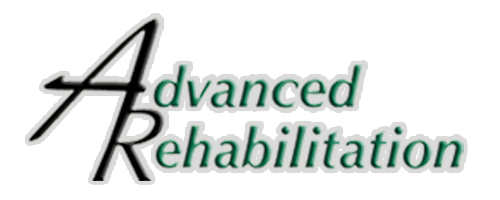Balance and Aging: By-Jason Balogh PT, MSPT, Cert. MDT
A common area seen in physical therapy clinics is balance disorders leading to falls and injuries. It is believed that 15% of American adults encounter balance problems each year. Balance is a requirement for sitting, standing, walking, and many of our functional activities. Loss of balance impacts all of these areas and one's ability to perform daily activities causing loss of independence in our environment.
Good balance requires a person to have adequate range of motion, strength, proprioception and kinesthesia, and a good functioning vestibular system. The visual system is also a part of our balance system and is examined by an optometrist.
Range of motion means that our joints have the ability to move through a normal amount of motion/flexibility. One example of this would be having the appropriate amount of dorsiflexion (ankle movement of lifting toes/foot towards shin). This gives us the ability to clear the bottom of our foot when walking so it does not catch on the floor.
Strength is also required to be within a reasonable limit to provide the appropriate force to move the joints and support the body to stay upright, propel our bodies during gait, compensate when we have a “mis-step”, and move us through space.
Kinesthesia and proprioception are the “sensors” in our joints that communicate back to the brain what positions our joints are in, whether static or moving. These also help us to react and compensate for uneven surfaces and prevent injuring ourselves.
The Vestibular system is also a large part of our balance system. It is located within our inner ear. There are three horseshoe shaped canals in each ear that are filled with a fluid and lined with hair cells that help to detect position and position changes. They work in part like a “bubble level” for our body.
Balance disorder symptoms can vary in individuals. Symptoms can include loss of balance, falling, dizziness, the sensation of falling, nausea, and lightheadedness. These can be caused from the above noted limitations as well as other medical disorders including cardiac problems, Parkinson's disease, stroke, as well as many others.
Physical therapists can evaluate patients to determine which systems are deficient and develop a treatment plan to address these deficiencies. Activities may include range of motion and strengthening activities as well as balance activities on varied surfaces with/without visual input. Cueing in walking may be performed. For vestibular disorders, special maneuvers may be done to help the system function be appropriately restored as well as activities to enable the system to accommodate.
In summary, balance difficulties are commonly seen as we age. Physical therapy is a common intervention used to help individuals identify and treat the source of balance deficits to restore function and allow participation in daily life with reduced risks of falling and improved confidence.
If you are having difficulties with balance or falls, please feel free to contact Advanced Rehabilitation offices and we can assist you in perusing the correct treatment to help restore your function.
